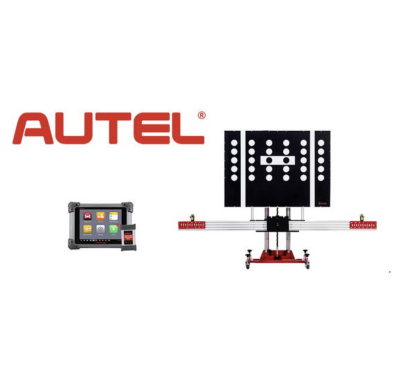ADAS Systems: Comparison of Analog and Digital Options

Introduction to ADAS Systems
ADAS systems, short for Advanced Driver Assistance Systems, have revolutionised the automotive industry by enhancing vehicle safety and performance. These systems incorporate various technologies and sensors to assist drivers in avoiding accidents and improving the overall driving experience. There are two primary types of ADAS systems available in the market: analogue and digital.
What are ADAS Systems?
ADAS systems are a collection of technologies and sensors designed to assist drivers in various aspects of driving, such as lane-keeping, collision avoidance, adaptive cruise control, and parking assistance. These systems utilise a combination of cameras, radar, lidar, and other sensors to gather data about the vehicle's surroundings and provide real-time feedback to the driver. By analysing this data, ADAS systems can detect potential dangers, warn the driver, and even take autonomous actions to prevent accidents.
The Benefits of ADAS Systems
ADAS systems offer numerous benefits that contribute to overall road safety and driver convenience. Firstly, these systems can significantly reduce the risk of accidents by providing timely warnings and interventions. For example, lane departure warning systems can alert the driver if they unintentionally drift out of their lane, preventing potential collisions.
Additionally, ADAS systems can assist drivers in parking by using sensors to detect obstacles and provide guidance for safe and accurate parking. Additionally, ADAS systems can improve fuel efficiency by optimising driving behaviour. Features such as adaptive cruise control can automatically adjust the vehicle's speed, maintaining a safe distance from the vehicle ahead and avoiding unnecessary acceleration or braking. This enhances safety and reduces fuel consumption, benefiting both the environment and the driver's wallet.
Analog ADAS Systems
Analog ADAS systems have been around for several years and have proven to be reliable and effective in enhancing vehicle safety. These systems use analogue signals to transmit information between the sensors and the control unit. Analog ADAS systems are known for their robustness and ability to withstand electromagnetic interference, making them suitable for various driving conditions.
One of the primary advantages of analogue ADAS systems is their compatibility with older vehicles. Since these systems have been in use for a long time, they can be easily integrated into older models without requiring extensive modifications. Analogue ADAS systems tend to be more cost-effective compared to their digital counterparts, making them an attractive option for budget-conscious vehicle owners.
Digital ADAS Systems
Digital ADAS systems represent the latest advancements in this technology and offer several advantages over analogue systems. These systems utilise digital signals for data transmission, enabling faster and more accurate processing of information. Digital ADAS systems are known for their high level of precision and reliability, making them ideal for demanding driving conditions.
One of the key benefits of digital ADAS systems is their ability to perform complex functions and adapt to changing situations. These systems can analyse vast amounts of data in real time, allowing for more sophisticated features such as pedestrian detection, traffic sign recognition, and autonomous emergency braking. Moreover, digital ADAS systems can be easily updated and upgraded with the latest software, ensuring that your vehicle remains equipped with the most advanced safety features.
Comparison of Analog and Digital ADAS Systems
When choosing between analogue and digital ADAS systems, several factors need to be considered. Firstly, the age and compatibility of your vehicle play a significant role. If you own an older vehicle, analogue systems might be the more practical choice due to their ease of integration. On the other hand, if you have a newer vehicle or are planning to purchase one, digital systems offer more advanced features and future-proofing.
Cost is another crucial factor to consider. Analog systems are generally more affordable, making them a viable option for budget-conscious individuals. However, digital systems provide greater precision and a wider range of features, which may justify the higher price tag for those prioritising advanced technology and safety.
Lastly, it is essential to evaluate your driving needs and preferences. If you frequently drive in challenging conditions or desire the latest safety features, digital ADAS systems might be the better option. However, if you primarily drive in less demanding situations and value reliability and simplicity, analogue systems can still provide adequate assistance.
Analog and digital systems both have their advantages and limitations, with analogue systems offering compatibility and cost-effectiveness, while digital systems provide advanced features and precision.
When choosing between the two, it is crucial to consider factors such as vehicle compatibility, cost, and driving needs. To view both our analogue and digital options and find the perfect fit for your vehicle, click here.
















